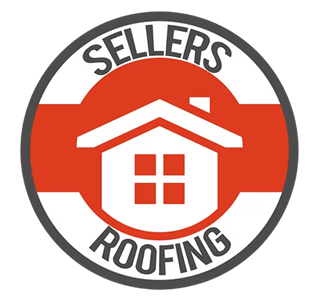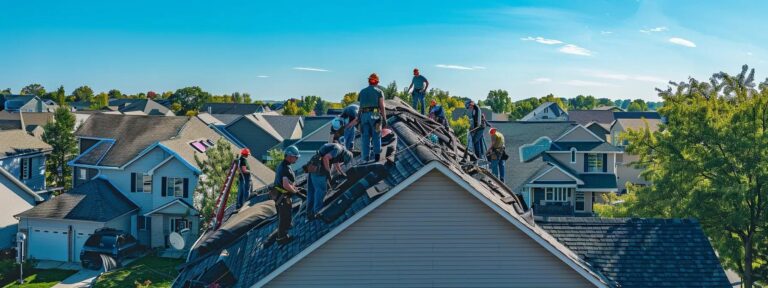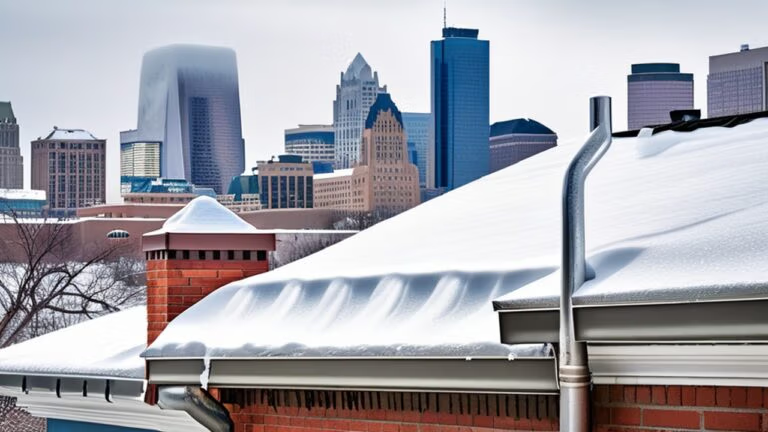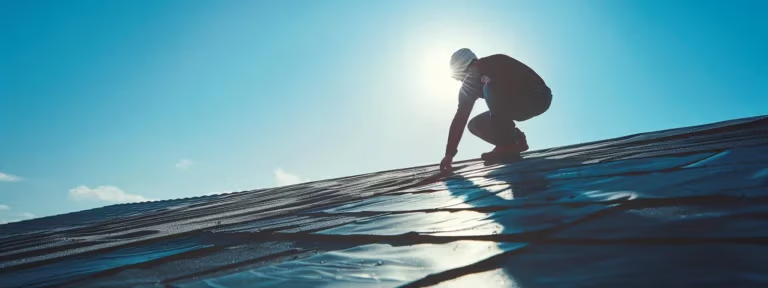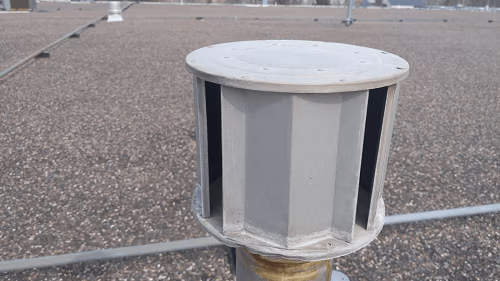Comprehensive Fall Protection Strategies for Lino Lakes Roofers
Fall protection is not just a recommendation for roofers in Lino Lakes; it’s a necessity that can prevent serious injuries or fatalities. With the risks associated with working at heights, understanding the correct fall protection strategies is crucial. This article will cover essential topics, including compliance with Minnesota regulations, the selection of appropriate fall protection systems, and the importance of effective safety training programs. By engaging with this content, you will gain the knowledge needed to enhance workplace safety, address specific risks related to steel and concrete structures, and ensure you have a robust plan for using roof hatches effectively.
Understanding the Risks Faced by Lino Lakes Roofers
In my experience as a roofing contractor, I’ve witnessed how common causes of falls in roofing projects, such as unsteady surfaces and inadequate safety measures, pose significant risks. Local weather conditions, particularly hail and extreme temperatures, can also impact safety protocols and influence work performance. Additionally, industry statistics reveal that roofing accidents are prevalent in Minnesota, affecting both property and professional reputation. In the following sections, I will explore these critical factors in greater detail commercial roof repair contractors lino lakes mn.
Common Causes of Falls in Roofing Projects
In my practice as a roofing contractor, I’ve often encountered unsteady surfaces that contribute to falls during roofing projects. Working with different materials, such as metal and asphalt shingles, requires a secure footing. If the roof is uneven or the surface is slippery due to moisture, it significantly heightens the risk of accidents, underscoring the need for effective fall protection systems tailored to the specific conditions at hand.
Wind poses another critical factor. On many occasions, I’ve found that working on pitched roofs adds complexity, especially when installing siding or shingles in gusty conditions. High winds can easily disturb materials and create instability, increasing the chances of slips and falls. Implementing proper fall protection systems not only safeguards workers but also ensures efficient project completion under challenging weather conditions.
Additionally, maintaining equipment and tools is vital to reducing risks on the job site. I’ve observed firsthand how misplaced tools or inadequate safety gear can lead to dangerous situations. It’s crucial to ensure that all personnel are equipped with the right fall protection systems and are trained in proper procedures when dealing with different roofing materials. With the right precautions, we can create safer environments for everyone involved in roofing projects.
Impact of Local Weather Conditions on RooferSafety
Local weather conditions in Lino Lakes can greatly influence roofingsafety. Extremely cold temperatures can create icy surfaces on metalroofs, which may lead to slips and falls. When planning a roofing project, it’s essential for me to account for these environmental factors and schedule work during favorable weather conditions to enhance occupational safety and health.
Additionally, strong winds often complicate the installation process, particularly when working with exteriors like shingles or metalroofing. I have witnessed materials getting blown off unexpectedly, which not only poses a hazard to our crew but also delays the project’s completion. This is why I prioritize proper fall protectionsafety measures, ensuring all team members are prepared for such challenges.
Heavy rainfall can further impact visibility and create slippery conditions on roofs, increasing the risk of accidents. Implementing additional safety measures such as harnesses or guardrails becomes necessary when weather conditions pose a threat. By continuously assessing the weather and adjusting our safety protocols, I strive to maintain a secure work environment for everyone involved in roofing projects.
- Local weather impact on roofingsafety
- Cold temperatures and icy roofs
- Strong winds affecting stability and visibility
- Importance of proactive safety measures
Statistics on Roofing Accidents in Minnesota
In Minnesota, roofing accidents remain a significant concern, with statistics indicating that falls account for a large percentage of injuries in construction. As a general contractor, I often review the latest data from Minnesota OSHA, revealing troubling trends that emphasize the need for robust fall prevention strategies. These statistics not only highlight the risks but also drive my commitment to implementing comprehensive safety measures on every installation.
The severity of falls in roofing projects can have lasting implications, both physically for the worker and financially for the company. For instance, I have seen firsthand how a lack of safety training and equipment can lead to costly accidents that jeopardize not only the health of my crew but also the reputation of our business as a reliable slateroofing provider. Establishing stringent safety protocols is essential to ensure we minimize these incidents and safeguard our workforce.
Moreover, many roofing professionals, including myself, recognize that compliance with OSHA regulations is vital in mitigating risks. I often collaborate with safety experts to develop tailored fall prevention programs that align with Minnesota OSHA standards. These programs aim to educate workers on the importance of using proper harnesses, safety nets, and guardrails, enabling us to maintain a safer working environment while reducing the likelihood of accidents during installations.
Complying With Minnesota Fall Protection Regulations
Understanding OSHA standards for roofing work is vital for maintaining safety on job sites. In Lino Lakes, specific safety requirements must be met to protect all workers involved. Failing to comply with these regulations can have serious legal consequences, affecting both individuals and companies. In the following sections, I will discuss these standards, local safety mandates, and the implications of non-compliance, offering practical insights for all roofers.
Overview of OSHA Standards for Roofing Work
As a roofing contractor, I fully understand the importance of adhering to OSHA standards when it comes to roofing work. These regulations outline essential safety requirements designed to protect workers from falls, which are common hazards on roofs. For example, the requirement to install guard rails on elevated surfaces ensures that our crew has reliable fall protection during installations or remodeling projects.
Additionally, OSHA standards emphasize the need for training and knowledge regarding fall protection systems. It’s critical that all crew members are familiar with proper safety protocols, including how to properly use harnesses and other equipment designed to prevent accidents. By ensuring that my team is well-informed, we not only comply with regulations but also foster a culture of safety that benefits everyone involved.
Moreover, as I collaborate with architects during project planning, understanding these standards becomes even more crucial. Incorporating safety features like guard rails and effective fall protection methods from the start allows for smoother project execution and enhances the overall safety of our workers. This proactive approach not only meets compliance requirements but also builds trust in our remodeling services, reinforcing our commitment to safety on every job site.
State-Specific Safety Requirements for Lino Lakes
In Lino Lakes, specific safety requirements govern how roofing work, especially after storm damage, must be conducted to protect all workers. As a roofing contractor, I always make sure my team understands that fall protection measures are not just guidelines but essential practices for safety. Local regulations dictate the use of guardrails, safety nets, and personal protective equipment, especially when working on roofs during Minnesota’s harsh winter months filled with snow and ice.
Additionally, training is paramount. I ensure that my crew is well-versed in both state-specific safety protocols and general roofingsafety practices to maximize safety compliance. It’s important for everyone involved to recognize the heightened risks associated with slippery surfaces and strong winds common to our region. This commitment to education helps us avoid potential accidents that can harm both our workers and our customers.
Adhering to these safety requirements not only protects my team but also reinforces our reputation as a reliable roofing service in Minneapolis. A focus on safety enables us to deliver quality workmanship while prioritizing the well-being of each crew member. Ultimately, by following these local guidelines, I strive to provide peace of mind to our customers, knowing their roofing needs are met with the highest safety standards in mind:
- Understanding fall protection measures
- Importance of crew training on safety protocols
- Complying with local regulations for roofing work
- Building trust with customers through safety commitment
Legal Consequences of Non-Compliance
Non-compliance with Minnesota’s fall protection regulations can lead to significant legal consequences for roofing contractors. I have seen situations where violations result in substantial fines, as regulatory bodies, such as OSHA, enforce strict penalties to ensure safety standards are met. By neglecting to implement safety systems like roof edge protection, we not only risk legal repercussions but also jeopardize the well-being of our crews.
In the roofing industry, contracts often contain clauses that emphasize adherence to safety regulations. When I review contracts with clients, I make it clear that non-compliance can lead to termination of our agreement, along with additional liabilities. Ensuring quality roofing work is not only about the end product but also about maintaining safe practices that protect everyone involved, including myself and my crew.
Moreover, the repercussions of failing to comply extend beyond legal penalties; they can impact our professional reputation. For instance, if safety incidents occur due to overlooked regulations, it can tarnish our image and drive customers away. As a roofing contractor, I prioritize understanding and adhering to local safety requirements to maintain trust and ensure our projects reflect the high standards we set for quality roofing:
- Understanding the legal framework for fall protection
- Importance of safety systems like roof edge protection
- Implications of non-compliance on contracts and reputation
- Maintaining customer trust through adherence to safety regulations
Choosing the Right Fall Protection Systems
Choosing the Right Fall Protection Systems
Evaluating different types of safety equipment is crucial for ensuring the safety of roofers in Lino Lakes. I will discuss key factors to consider when selecting gear, such as employment conditions, price, and inspection requirements. Additionally, I will highlight recommended brands and suppliers specializing in metalroofingsafety gear, providing practical insights for fellow contractors.
Evaluating Different Types of Safety Equipment
When evaluating different types of safety equipment for my roofing company, I always consider the specific needs of each project and the environment. For instance, safety railings are essential on pitched roofs or when working at heights. These railings provide a reliable barrier that helps prevent falls, making them indispensable for any roof repair work.
In addition to safety railings, I ensure that my team is equipped with proper harnesses and lanyards that meet industry standards. I’ve found that harnesses with adequate padding and adjustable components offer greater comfort and mobility, enabling crew members to work efficiently while staying secure. It’s vital to look for brands that are known for durability and compliance with safety regulations to ensure maximum protection.
Furthermore, I emphasize the importance of regular inspections of all safety gear. Each piece of equipment should be checked frequently to identify any wear and tear that could compromise safety. By maintaining our equipment, my roofing company not only adheres to safety regulations but also helps protect our workers, ultimately leading to fewer claims with home insurance providers and a stronger reputation in the field of construction.
Factors to Consider When Selecting Gear
When selecting fall protection gear, I always prioritize comfort and fit. Properly fitted harnesses and equipment not only ensure the safety of our roofers but also enhance their efficiency while working. As remodelers in the field, I know how crucial it is for my crew to be agile and secure to maintain high standards of customer service, particularly during complex commercial roof repair projects in Lino Lakes.
Additionally, I evaluate the warranty and longevity of the equipment before making a purchase. Investing in quality gear with substantial warranties reassures me that the equipment will withstand rigorous conditions. This not only supports my commitment to safety but also contributes to our reputation as reliable commercial roof repair contractors in Lino Lakes, MN, which is vital for attracting future clients.
Lastly, I consider the compliance of the gear with industry safety regulations. Using equipment that meets or exceeds OSHA standards is non-negotiable in my practice. This dedication to safety enhances our credibility in the roofing industry and provides peace of mind to both my crew and customers, ensuring that everyone involved is protected during all roofing activities.
Recommended Brands and Suppliers in Lino Lakes
In my experience as a roofing contractor in Lino Lakes, I have found that choosing the right brands for fall protection systems is crucial for safety and reliability. Companies like 3M and Miller fall into this category, offering high-quality harnesses and lanyards designed to meet strict safety standards. Their products are popular among contractors due to their durability and comfort, which are key factors when working at heights.
Additionally, I recommend attending local trade shows or industry events where reputable suppliers showcase their safety equipment. This provides an excellent opportunity to connect with brands such as Peak and Guardian Fall Protection, which offer comprehensive solutions for roofingsafety. Engaging with suppliers directly allows me to better understand product features and ensure that I’m selecting the best gear for my team’s needs.
Finally, I prioritize sourcing from local suppliers whenever possible. There are several well-regarded safety equipment stores in the Lino Lakes area that offer personalized service and support. By building relationships with these suppliers, I can secure not only reliable fall protection systems but also valuable insights into the latest products and safety practices in the roofing industry:
- Important brands: 3M, Miller, Peak, Guardian Fall Protection
- Connect with suppliers at local trade shows
- Advantages of sourcing from local suppliers
Implementing Effective Safety Training Programs
Essential fall protection skills are crucial for roofers to minimize risks on the job. I focus on organizing regular training sessions to ensure that my team is well-prepared and knowledgeable about safety equipment and procedures. Additionally, I leverage various resources for certification and continued education, which are vital for maintaining compliance and enhancing overall safety on roofing projects.
Essential Fall Protection Skills for Roofers
In my experience, essential fall protection skills are the cornerstone of a safe roofing environment. I prioritize teaching my crew about the proper use of harnesses, lanyards, and other personal protective equipment. Understanding how to securely fit and effectively use this equipment can dramatically reduce the risk of falls on the job site.
Another crucial skill I emphasize is recognizing potential hazards inherent in roofing work. I guide my team on how to assess job sites for unsteady surfaces, slippery conditions, and environmental factors like wind. This ability to identify risks proactively allows us to take necessary precautions and implement appropriate safety measures before starting any roofing project.
Lastly, I focus on the importance of communication among my crew members. Clear communication is vital when working at heights, as it ensures that everyone is aware of their surroundings and any ongoing safety concerns. I instill in my team the value of discussing safety protocols and any unusual situations, which fosters a culture of safety and teamwork within our roofing projects.
Organizing Regular Training Sessions
In my roofing business, I understand that organizing regular training sessions is fundamental to maintaining a culture of safety. These sessions are designed not only to reinforce existing safety protocols but also to keep my team informed about the latest fall protection techniques and equipment. By ensuring everyone is up-to-date, we enhance our collective ability to identify hazards and act swiftly, which is crucial in a high-risk environment like roofing.
During these training sessions, I focus on practical exercises that allow my crew to practice with the fall protection gear they will use on the job. By engaging them with real-life scenarios, I provide opportunities for my team to develop their skills in a controlled environment. This hands-on approach not only builds confidence but also reduces the likelihood of accidents occurring during actual roofing projects, as the crew becomes more comfortable and proficient in using the equipment.
Additionally, I encourage open communication during these training sessions, allowing my team members to ask questions and share experiences. This collaborative environment fosters a deeper understanding of safety protocols and enables us to learn from one another. By being proactive in organizing these training opportunities, I not only adhere to compliance standards but also prioritize the safety and well-being of my crew, which ultimately benefits our overall performance and reputation in Lino Lakes.
Resources for Certification and Continued Education
To ensure that my team stays current on fall protection measures and best practices, I actively seek out resources for certification and continued education in the roofing industry. Organizations like the National Safety Council and the Occupational Safety and Health Administration (OSHA) offer valuable online courses and certification programs that cover essential topics related to fall safety. Engaging in these structured training sessions enhances our compliance and helps instill a culture of safety among my crew.
I also encourage my team to participate in local workshops and seminars focused on safety training specific to roofing. Many of these events provide hands-on experiences and insights from industry experts, allowing roofers to learn about the latest technologies and techniques in fall protection. By taking advantage of these opportunities, my crew can gain practical knowledge that we can apply directly to our projects, reducing the risk of falls and injuries on the job.
Networking with other roofing professionals through associations such as the Minnesota Roofing Association opens additional avenues for learning and growth. I have found that sharing experiences and challenges with peers not only enhances our knowledge but also inspires new safety practices that can be implemented within our own team. This collaborative approach to ongoing education strengthens our capabilities and ensures we are always prioritizing safety in our roofing work in Lino Lakes.
Developing a Site-Specific Fall Protection Plan
In developing a site-specific fall protection plan, I focus on three key areas: assessing potential hazards before starting work, integrating safety measures into project planning, and effectively communicating the plan to all team members. By thoroughly identifying risks and embedding safety protocols from the outset, I ensure that my crew is well-prepared to tackle challenges safely. This proactive approach not only enhances our safety standards but also promotes a culture of awareness and accountability among all team members.
Assessing Potential Hazards Before Starting Work
Before starting any roofing project, I always conduct a thorough assessment of potential hazards present at the site. This includes evaluating the roof‘s condition, such as checking for uneven surfaces or deterioration that could increase the risk of falls. Identifying these issues early allows me to implement appropriate fall protection strategies tailored specifically to the job site’s conditions.
I also consider environmental factors that may pose risks to my crew, like wind or rain, which can significantly affect safety during roofing work. For instance, I have often postponed projects due to high winds that could disturb materials and create an unstable work environment. By proactively addressing these conditions, I ensure my team remains safe and that we adhere to strict fall protection protocols.
Moreover, I engage with my crew during the hazard assessment process to discuss any concerns they may have about the site. This collaboration fosters a culture of safety and encourages my team to speak up about potential risks they observe. Together, we establish a comprehensive plan that not only addresses identified hazards but also enhances the overall effectiveness of our fall protection measures, ensuring a safer work environment for everyone involved.
Integrating Safety Measures Into Project Planning
Integrating safety measures into project planning is essential for ensuring the protection of my crew during roofing projects. From the outset, I analyze the specific conditions of the worksite to determine the best fall protection strategies tailored to the unique challenges presented. This approach allows me to embed safety protocols into the overall project timeline, ensuring that each team member understands the hazards and the appropriate safety measures to employ.
During the project planning phase, I communicate openly with my crew to gather insights about any potential risks they foresee. Engaging with my team fosters a collaborative environment where everyone feels responsible for safety. By integrating their observations with my expertise, I can develop a comprehensive plan that prioritizes fall protection while also addressing practical workflow considerations, such as the optimal use of safety equipment like harnesses and guardrails.
Moreover, I ensure that all safety measures are documented in our project plan, making it easier for the crew to reference throughout the job. This documentation becomes a critical resource for maintaining focus on safety objectives and reinforces the importance I place on protecting my team. When everyone is well-informed about the fall protection strategies we’re implementing, the likelihood of accidents is significantly reduced:
| Key Element | Description |
|---|---|
| Site Assessment | Evaluate the roof’s condition and identify potential hazards before work begins. |
| Team Engagement | Involve crew members in discussing safety concerns and integrating their insights into planning. |
| Documentation | Record all safety measures in the project plan for ongoing reference and accountability. |
Communicating the Plan to All Team Members
Effective communication of the fall protection plan is essential for promoting safety among all team members. I hold a brief meeting before each project begins to ensure everyone understands the specific safety measures we are implementing. During this meeting, I encourage my crew to ask questions and provide input, which helps foster a culture of shared responsibility and awareness regarding fall protection on the job site.
To reinforce the fall protection strategies, I utilize visual aids and clear documentation outlining our safety protocols. I have found that providing everyone with a written copy of the plan helps solidify their understanding of the expectations and procedures. This document serves as a reference point during the project, allowing my crew to revisit essential safety measures as needed.
Additionally, I emphasize the importance of ongoing communication throughout the project. I regularly check in with my team to ensure that any new potential hazards are discussed and addressed promptly. By maintaining open lines of communication, I prioritize not only safety but also teamwork, creating an environment where my crew feels empowered to speak up about safety concerns before they escalate:
- Conduct a pre-project safety meeting with the crew
- Provide written documentation of the fall protection plan
- Encourage ongoing communication about potential hazards
Maintaining and Inspecting Safety Equipment
Creating a regular inspection schedule is essential for ensuring the safety and reliability of our fall protection equipment. I focus on identifying signs of wear and tear to prevent accidents before they occur. Proper storage and handling of equipment further enhance longevity and performance. Each of these practices significantly contributes to maintaining a safe working environment for roofers in Lino Lakes.
Creating a Regular Inspection Schedule
Creating a regular inspection schedule for safety equipment is crucial in my roofing practice. I establish a routine where all safety gear—harnesses, lanyards, and guardrails—is checked weekly to identify any signs of wear and tear. This proactive maintenance approach not only boosts safety but also assures my team that we’re operating with reliable equipment, reducing the likelihood of accidents on the job site.
I prioritize documenting the outcomes of each inspection to keep a detailed record of our safety equipment’s condition. For instance, if I notice any frayed straps or malfunctioning mechanisms, I promptly take them out of service and arrange for repairs or replacements. This level of diligence reinforces a culture of accountability among my crew, making it clear that safety is always our top priority.
Furthermore, I ensure that my team understands the importance of these inspections and encourages them to report any equipment issues they encounter during their work. By fostering open communication, I create an environment where everyone feels responsible for maintaining safety standards. This culture not only helps prevent potential hazards but also empowers my crew, knowing they are part of a safety-focused operation dedicated to protecting each other while working in Lino Lakes.
Identifying Signs of Wear and Tear
In my experience as a roofing contractor, identifying signs of wear and tear on safety equipment is vital for maintaining a safe working environment. Regularly inspecting harnesses, lanyards, and other fall protection gear allows me to catch issues such as frayed straps, damaged clips, or weakness in materials that could lead to equipment failure. By being proactive, I can ensure that my crew is not exposed to unnecessary risks while working at heights.
One practical approach I take is to incorporate a hands-on inspection routine where each team member is responsible for checking their own gear before every job. This promotes accountability and encourages my crew to be vigilant. For instance, I emphasize looking for discoloration or signs of UV damage, which can weaken the materials over time and diminish their effectiveness during operations.
Furthermore, I stress the importance of replacing any damaged equipment immediately. Even minor signs of wear should not be ignored, as they can escalate into serious safety hazards on the job site. Consistently monitoring the condition of our fall protection systems not only safeguards our workers but also reinforces our commitment to professionalism and high safety standards in our roofing practices in Lino Lakes.
Proper Storage and Handling of Equipment
Proper storage of safety equipment is essential to ensure its longevity and effectiveness. I frequently emphasize the importance of keeping harnesses, lanyards, and other fall protection gear in a dry, cool place when not in use. This prevents damage from moisture and extreme temperatures, which can lead to quicker degradation of the materials.
Additionally, I train my crew to handle equipment with care. They know to avoid dragging systems across rough surfaces or exposing them to potential hazards that could compromise their integrity. By instilling a culture of respect for safety gear, I enhance the durability of our equipment and reinforce its importance in our fall protection strategy.
Finally, I ensure that all safety equipment is easily accessible and organized for prompt deployment on the job site. When equipment is well-maintained and readily available, it reduces delays and minimizes risks, as my team can quickly access the necessary tools for secure roof work. This proactive approach not only boosts efficiency but also directly contributes to the overall safety and effectiveness of our roofing projects in Lino Lakes.
Concluding Roofing Safety Practices
Implementing comprehensive fall protection strategies is essential for ensuring the safety of roofers in Lino Lakes. By understanding and adhering to OSHA standards, assessing potential hazards, and providing proper training, we create a safer working environment that minimizes the risk of accidents. Regular inspection and maintenance of safety equipment further enhance our commitment to protecting our crew. Prioritizing these strategies not only safeguards our team but also reinforces our reputation as reliable roofing professionals dedicated to quality and safety.
